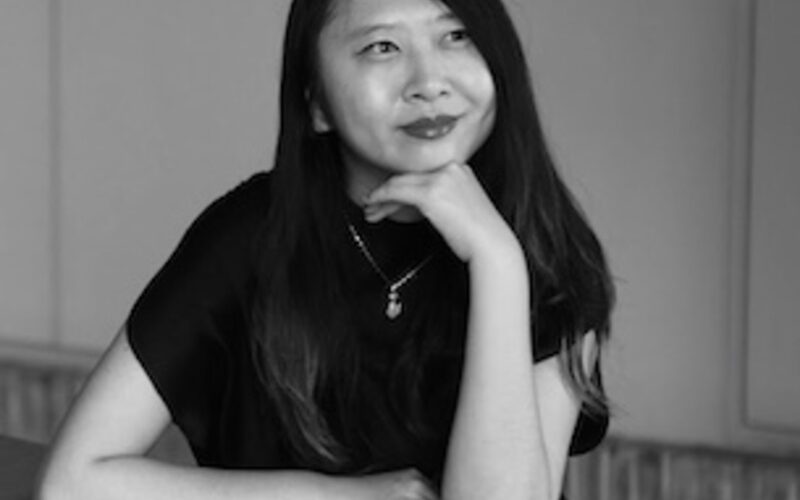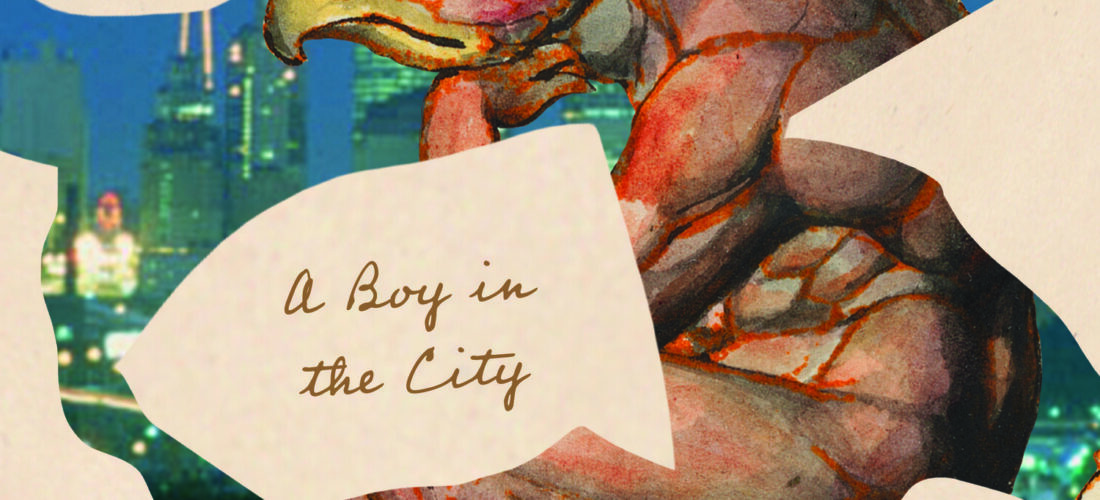Sally Wen Mao’s The Kingdom of Surfaces, to be released on August 1st by Gray Wolf Press, is an ambitious historical examination of the treatment of Asian people in the West, written in the wings of the Coronavirus pandemic. Mao’s third poetry collection expands her extensive creative repertoire: while her premier book of poems, Mad Honey Symposium, channels its poetic potency from images of floral and fauna, her second collection, Oculus, is a speculative tour-de-force that examines the Western response to Asian womanhood and Asian celebrity. The Kingdom of Surfaces continues the conversations in her previous poetry collections about the Western voyeurism of East Asia, the similarities between biological processes of nature and human behavior, and her literary muse Anna May Wong—however this time, Mao chooses the world of museums as the setting for her ruminations.
The Kingdom of Surfaces opens with poems that address the heightened peril of Asian-Americans during the worst of the Coronavirus pandemic in verse that substitutes ornate, coy language with rage-filled directness. In “Batshit,” Mao writes that people “call eating dog barbaric, / but not police brutality. They hated a caged animal in a foreign country, but ignore the border camps in their own.” In Mao’s view, the exotification and demonization of Asian cultural practices so absorbs the Western consciousness that it distracts them from the evils of their own country that are perpetuated on a societal scale. In “Wet Market,” Mao grapples with Wuhan’s dual role as both her ancestral home as well as the original hotbed of Covid-19. The poem’s scattered form reifies the chaos and vibrancy of the city’s wet market. Mao writes that:
… In the wet market, I touch live snapping
turtles, frogs in vats, smell the musk of open-air
stalls You want your meat squirming and slippery,
not the squids and king conch packed in ice
Sally Wen Mao, “Wet Market”
Mao suggests that wet markets, far from being the anachronistic “global threat to public health” that Western pundits describe them as, function more similarly to the farmer’s markets that are already hailed in the United States as oases of fresh, local produce. In Mao’s view, the wet market, by selling food that is either alive or killed on-site, reaches into the heart of things and truly embraces the life-cycle of an organism—unlike Western culture, which is instead committed to “a body cleaved of hungers and horrors, its stench so inherently / clean…” In short, it is committed to a life of surfaces.
Surfaces permeate the entire collection as a motif. For Sally Wen Mao, her shared cultural history with other Chinese people, and in particular other Chinese women, is a somatic experience. In the poem “Solitary Generation,” Mao speaks from the perspective of an anonymous Chinese elder when she writes that “in fields of magic, my history / cannibalizes yours…my leftover daughters, freezing / your eggs in a tumblr / my bare-branched sons, fluffing / your hens for the roost…” Mao seamlessly enters the perspective of others, revealing that the trauma of a person’s cultural existence is shared by the entire community. In “Aubade with Gravel and Gold,” Mao admits that “I’m sick of speaking for women who’ve died / Their stories and their disappearances / bludgeon me in my sleep.” Later in the poem she recounts that “last night a woman from another century / entered me, and her male phantoms possessed / me, all night I was warm, / cold and savage with their touch.” For Mao, remembering and honoring the stories of the Chinese women that came before her is an act of bodily possession.
However, the records of history function much differently in museums. In an essential sense, Mao defines museums as institutions of Western education and control whose purpose extends far beyond its record of aesthetics. The eponymous poem of the collection, “The Kingdom of Surfaces,” charts Mao’s surreal tramp through the Metropolitan Museum of Art’s exhibit China: Through the Looking Glass as she also reflects on the book which the exhibit’s name references, Lewis Carol’s Through the Looking Glass, and What Alice Found There. She notes that the book was published the same year as the Chinese Massacre in Los Angeles; moreover it was published one decade after the Second Opium War and one decade before the Chinese Exclusion Act. Mao writes:
If you decontextualize the history from the bowl and place it on a kitchen table, what do you have? A varnished object, whose function is to hold sugar. Sugar sweetened the ranch hand’s morning coffee, sweetened the whipping cream, the cakes and tarts. The purpose of sugar—pleasure. Sensation. What a treat. Skull, sockets, nineteen-century cane field. If you place the decorative sugar bowl in a museum exhibition, what do you get? An even brighter elevation! When a curator smiles, he gives us permission to enjoy the sugar bowl for pure aesthetic value.
Sally Wen Mao, “The Kingdom of Surfaces”
One glaring issue with the presence of Asian art in Western museums is that these arts and wares are associated with a centuries-old tradition of plundering and exploiting Asian people in order to acquire them. At the turn of the nineteenth century, the luxury tastes of the European middle-class shifted toward an obsession with Asian imports such as silks, porcelain, and lacquerware. As the British historian Maxine Berg argued in her article “In Pursuit of Luxury,” “these goods were special luxuries for Europeans: they were not the ancient or Persian luxuries of corruption and vice, the gold and rubies of the Indies. They were luxuries associated with a civilized way of life.” Moreover, Asian art (and in particular Asian interiors) was also one of the chief inspirations of the Aesthetic Movement, which called for a retreat from the sterile aesthetics of the Industrial Age and an embrace of the sexual, non-material, and “art for art’s sake”—in short, it was a glorification of “the surface.” Both of these factors placed Asian objects in high demand; however, a consistent issue was that Europeans had few objects of their own that the Asian public was interested in.
As a result, Western nations exercised their imperial might. In the 18th century, European demand for Chinese luxury goods created a trade imbalance between the East and West that Britain desperately hoped to rectify. In order to incite Chinese demand, Britain began to cultivate opium in Bengal to sell in the Chinese black-market; the strategy reversed the Chinese trade surplus and introduced opium addiction as a serious affliction to the nation. Moreover, in 1853, the U.S. military forced Japan to open its ports to trade, aiming to end the nation’s isolationist policies. The shogunate capitulated to their demands; the prosperity of the Edo period, induced by the agricultural boom, had ended, and Japan’s military was no match for that of the United States’. How can the West’s obsession with Asian objects be reconciled with the heartless degradation of both their economies and their people?
Mao equates the aestheticization of Asian culture at the price of its humanity, as perpetuated in the walls of the museum, with the objectification of Asian people in Western culture. In her poem “Romance of the Castle-Toppler,” Mao examines the term 倾城 , which refers both to a woman’s exceptional beauty (or “allure,” as its direct translation) and also speaks “to the subjugation of a country due to the female sex” . Fascination with womanly beauty was coupled with anxiety about the power that her beauty bestowed upon her. Continuing with the motif of surfaces, Mao writes that the castle-toppler is “a surface, a sheet. / She is imagined but never touched.” In Chinese literature, she also typically succumbs to a violent death—most famously, in “The Song of Everlasting Sorrow,” the beloved Emperor’s consort and renown beauty Yang Guifei strangled herself in front of a Buddhist shrine at the behest of her husband.
Although not as overtly brutal, Mao suggests that the fate of Chinese women since has been similarly doomed, insofar as they are defined by their sexual utility. Once again, she turns to Anna May Wong, widely considered to be the first Chinese-American film star, to illustrate her point. In one section of “The Kingdom of Surfaces,” Mao imagines that she and Anna May Wong share a boat ride. Mao writes:
Reeling from the serpent bite, my body is covered with blue welts. These are the same welts suffered by the first Chinese immigrant women in America, Anna May says. One generation before I was born, women poured into the ports of San Francisco, and they were sold in slave auctions right on the docks. By day they toiled in factories, by night they toiled with their bodies—if they transgressed, they were branded with hot packers.
Sally Wen Mao, “The Kingdom of Surfaces”
Once again Mao argues that historical memory is experienced somatically, such as through welts on the body—it simply cannot be captured properly in a museum where aesthetics supersede content. The sexual labels forced onto Asian women today as “temptresses” functions similarly to the commercial pressure that Anna May Wong faced to play roles in films that caricatured Asian women as “Dragon Ladies” —both are simply less graphic versions of the violence that Asian women face in society. As Mao mentioned in “Batshit,” since the pandemic an Asian woman suffered second-degree burns when someone threw acid on her while she was taking out garbage in her Brooklyn neighborhood. In another instance, a forty-year old Asian woman was pushed into the train tracks and killed. In Atlanta, six Asian women, all of them employed at Atlanta-area spas, were killed by a white man who was trying to rid himself of his porn and sex addiction.
Sally Wen Mao’s collection The Kingdom of Surfaces is a profoundly moving reflection on what objection means for the experience of Asian womanhood. Her poems are hard-hitting, educational, and timely. Most importantly, they are a love letter to her Chinese heritage and its color, messiness, and depth—all of which cannot be captured at museums.

